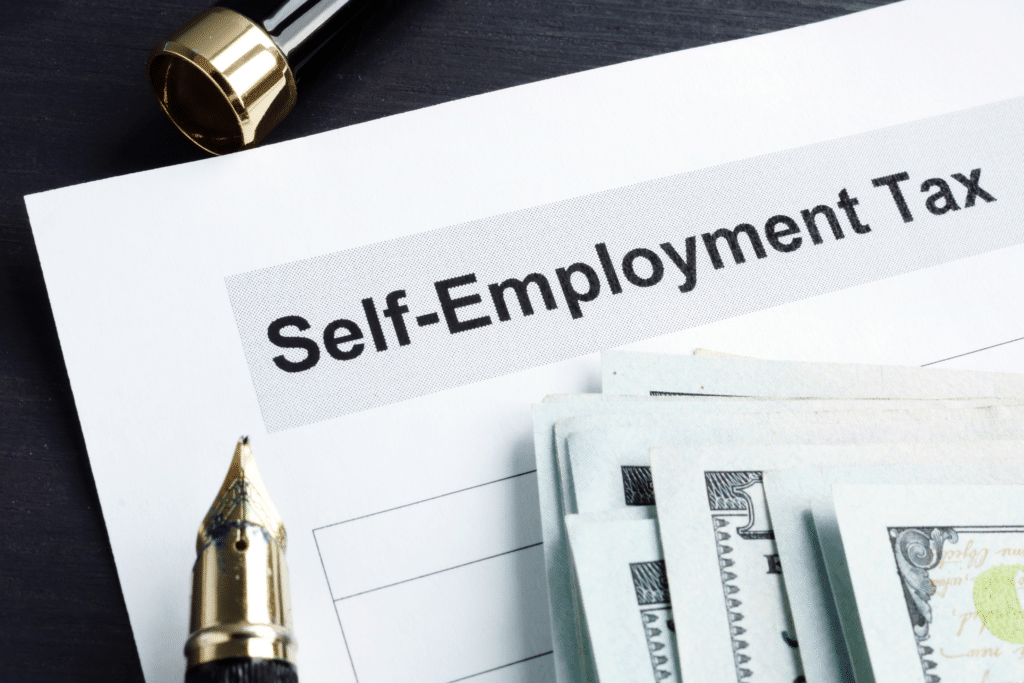Self-Employment Taxes for Expat: How To Make Your Tax Filing a Breeze

Self-employment offers freedom and flexibility, but it also comes with a big challenge when tax season rolls around. Unlike regular employees who have taxes automatically deducted from their paychecks, self-employed individuals have to handle their own income tax responsibilities. This includes managing both the employer and employee portions of Social Security and Medicare taxes, known as the self-employment tax.
If you’re self-employed but unsure about how to file your taxes, don’t worry. In this article, we’ll discuss the ins and outs of filing taxes as a self-employed individual, providing you with practical tips and essential knowledge to make this process as smooth as possible and ensure you’re in full compliance with the IRS.
Who Must File Self-Employment Taxes?
If you work for yourself or operate as an independent contractor, you are considered self-employed. This includes freelancers, gig economy workers, small business owners, and sole proprietors. Being self-employed means you are responsible for your tax obligations, which can differ from traditional employees.
You must file self-employment taxes if:
- You’re a Sole Proprietor or Business Owner: As a business owner, you are generally subject to self-employment taxes on your business income. Whether you’re a sole proprietor, an LLC member, or a partner in a partnership, your share of the business’s income is considered self-employment income.
- You’re a Freelancer or Independent Contractor: If you work freelance or are hired as an independent contractor, you are typically responsible for self-employment taxes. This includes professions like consultants, writers, graphic designers, and many more.
- You Receive 1099 Income: If you receive 1099-MISC forms or other income reports as an independent contractor or freelancer, it’s a strong indicator that you need to file self-employment taxes. These forms report your earnings to the IRS.
- You Earn Over $400: If your net earnings from self-employment exceed $400 in a tax year, you must file self-employment taxes. The IRS sets this threshold, and it’s important to note that even if your total income is below the standard deduction, you may still be subject to self-employment tax.
What Do I Need to Know About Self-Employment Taxes?
Self-employment taxes include both Social Security and Medicare taxes. These taxes are similar to the payroll taxes deducted from the paychecks of traditional employees. However, when you’re self-employed, you’re responsible for paying both the employer and employee portions of these taxes.
The self-employment tax rate for 2023 is 15.3% of your net earnings. This comprises 12.4% for Social Security and 2.9% for Medicare. It’s essential to note that you only pay Social Security taxes on your earnings up to a certain limit, which is $160,200 for 2023. However, all of your net earnings are subject to the Medicare portion.
How Do I Calculate Self-Employment Taxes?
Calculating your taxes begins with determining your net earnings from self-employment for the year. Let’s take a closer look at the process using an example:
Step 1: Calculate Your Net Earnings
Your net earnings are the foundation for calculating self-employment taxes. To determine your net earnings, subtract your business expenses from your gross income from self-employment. For example, if your gross income is $70,000, and your business expenses amount to $10,000, your net earnings would be $60,000.
Step 2: Determine Your Tax Base
Once you have your net earnings, you can calculate your tax base. This is the portion of your net earnings subject to self-employment tax, which is typically 92.35% (0.9235) of your net earnings.
Tax Base = Net Earnings x 92.35%
Using our example:
Tax Base = $60,000 x 0.9235 = $55,410
Step 3: Calculate Self-Employment Tax
Now that you’ve determined your tax base, apply the self-employment tax rate of 15.3% (0.153) for 2023. This rate comprises 12.4% for Social Security and 2.9% for Medicare. Calculate your self-employment tax:
Self-Employment Tax = Tax Base ($55,410) x 15.3% (0.153) = $8,472.93
Your estimated self-employment tax for the year is $8,472.93.
How Can I Make Quarterly Tax Payments?
As a self-employed individual, you’re responsible for handling your tax payments, including Social Security, Medicare, and income tax. Since no employer withholds these taxes for you, you need to make quarterly estimated tax payments. This helps you avoid a large tax bill at the end of the year and potential penalties for underpayment. To make these payments, use Form 1040-ES to help you calculate the amount you owe. Remember to submit your quarterly payments in April, June, September, and January.
Five Steps for Filing Self-Employment Taxes
Here’s a simplified guide for filing your taxes:
- Report Your Income
Gather any income-related documents, like 1099 forms, to calculate how much you’ve earned during the tax year.
- List Your Business Expenses
Gather receipts and invoices showing your expenses related to your work, such as supplies or mileage. You can deduct these expenses from your income, but they must be essential for your business, not personal. Learn more about common tax deductions for self-employed here.
- Explore Tax Deductions
Check if you qualify for additional deductions, such as contributions to retirement accounts or health insurance payments.
- Complete IRS Forms
Use IRS Form 1040 to report your income and tax. Depending on your situation, you might need to fill out Schedule C for income and expenses, Schedule SE for self-employment taxes, and Schedule 1 for additional income and deductions.
- Pay Any Additional Taxes Owed
After completing your return and you find that you owe additional taxes, ensure that you pay them promptly to avoid penalties and interest charges. The IRS provides various payment methods to make this process as convenient as possible.
The Bottom Line
While being self-employed comes with many advantages, such as flexibility and independence, it also means filing your taxes. Understanding the ins and outs of self-employment taxes can help you make the most of your income and deductions.
To ensure accurate and compliant tax filing, we highly recommend working with a trusted tax professional. Tax Samaritan can provide expert guidance and help ensure you’re taking advantage of all the tax deductions to lower your taxes. Click here to get a free tax quote.


